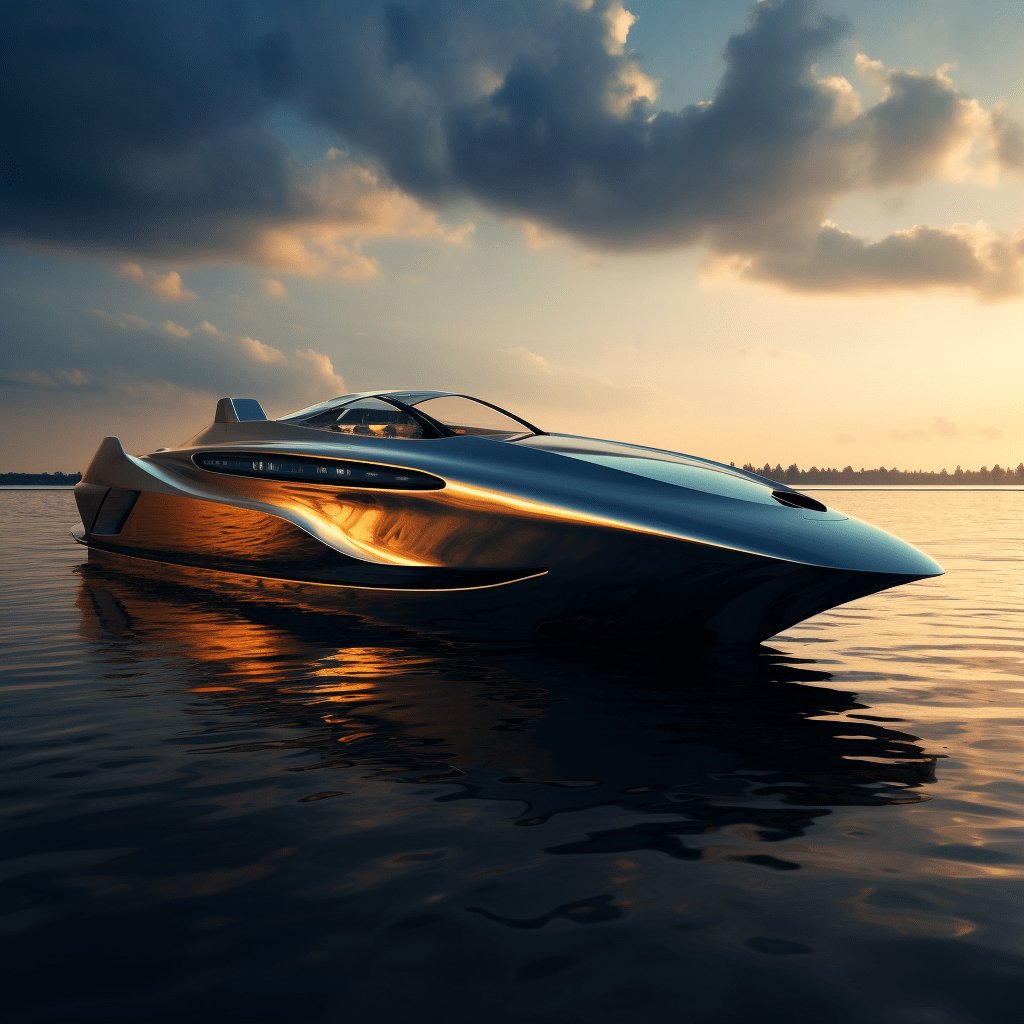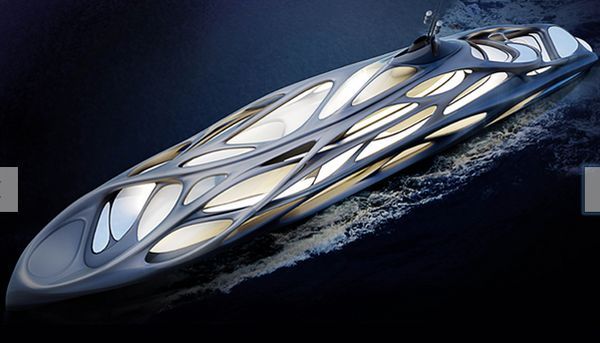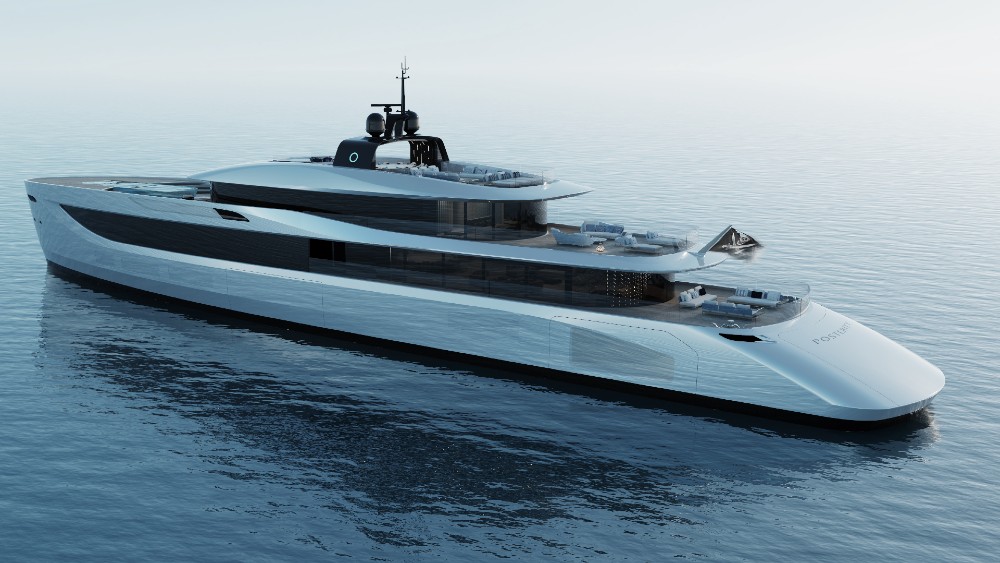Imagine cruising along the azure waters on a modern, sleek yacht, surrounded by luxury and cutting-edge design. But have you ever wondered how technology plays a vital role in shaping these stunning vessels? From innovative materials to advanced navigation systems, technology has revolutionized yacht design, pushing the boundaries of what is possible in terms of aesthetics, functionality, and sustainability. In this article, we will take a closer look at the fascinating ways in which technology is shaping the trends in yacht design, providing you with a glimpse into the exciting future of the industry. So hold on tight as we embark on this exhilarating journey into the world of yacht design and its technological advancements.
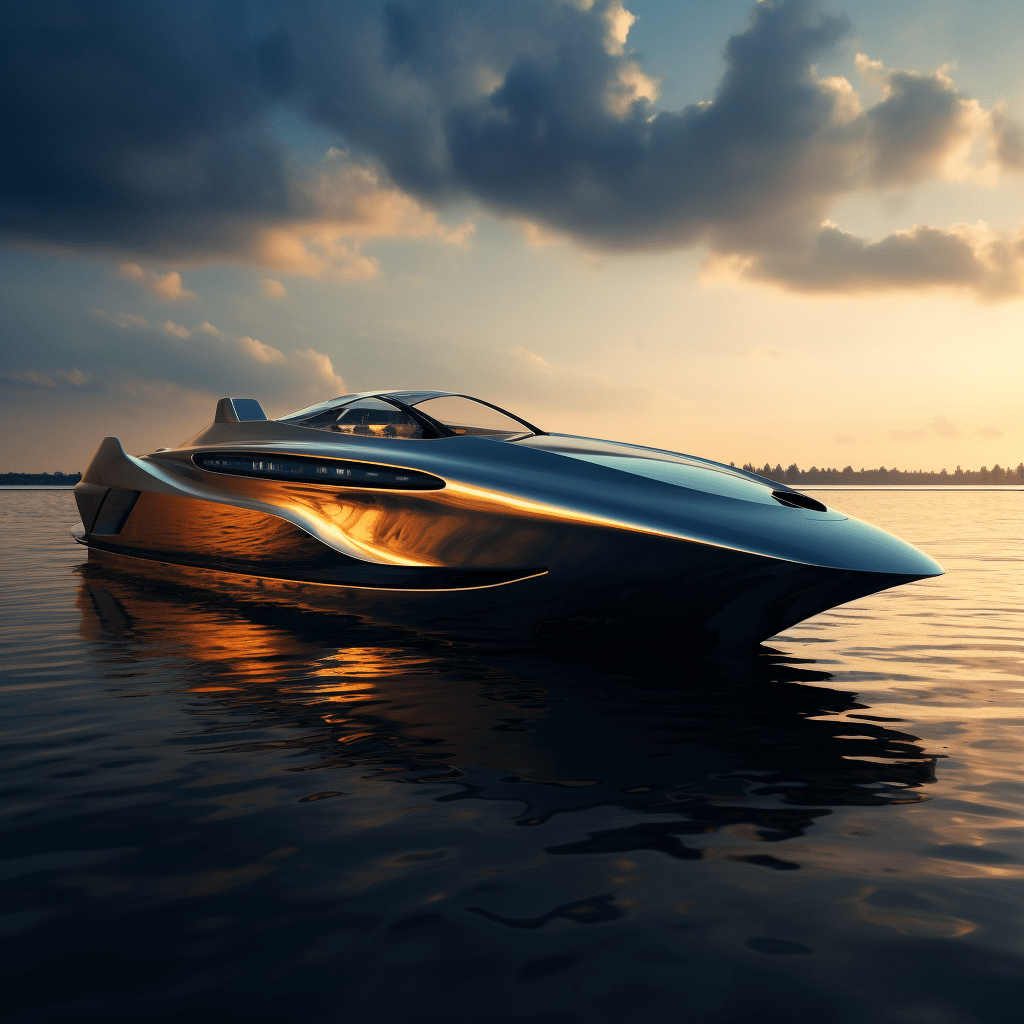
This image is property of burtonwaters.co.uk.
1. Introduction
Yacht design has come a long way over the years, with advancements in technology playing a significant role in shaping the trends we see today. From the early days of yacht design to the incorporation of advanced materials, enhancing performance through technology, and integrating smart systems, technology has revolutionized every aspect of yacht design. In this article, we will explore the evolution of yacht design, the role of technology in shaping its trends, and the impact it has on various aspects of yacht ownership and chartering.
2. Evolution of Yacht Design
2.1 Early Yacht Design
Yacht design has its roots in the early days of sailing, where boats were designed for both practicality and aesthetics. In the early 19th century, yacht design evolved from sailboats used for transportation to vessels designed for leisure and racing. These early yachts were predominantly made of wood, with an emphasis on speed and maneuverability. While they may seem rudimentary by today’s standards, these early designs laid the foundation for the advancements that were to come.
2.2 Advancements in Yacht Design
As technology progressed, so did yacht design. The introduction of fiberglass in the mid-20th century revolutionized the industry, allowing for lighter and more durable hulls. This breakthrough material opened up new possibilities for yacht designers, enabling them to create sleeker and faster vessels. With the advent of computer-aided design (CAD) in the 1980s, designers were able to create more precise and complex hull shapes, further enhancing performance on the water.
2.3 Influence of Technology in Yacht Design
Technology has had a profound influence on yacht design, pushing the boundaries of what is possible on the water. Advancements in materials science have led to the development of revolutionary lightweight and composite materials, making yachts faster, more fuel-efficient, and environmentally friendly. The integration of advanced technologies, such as computational fluid dynamics (CFD) and stability and maneuverability systems, has allowed designers to optimize performance and safety like never before. Additionally, the incorporation of smart systems and automation has transformed the yachting experience, enhancing comfort, convenience, and safety on board.
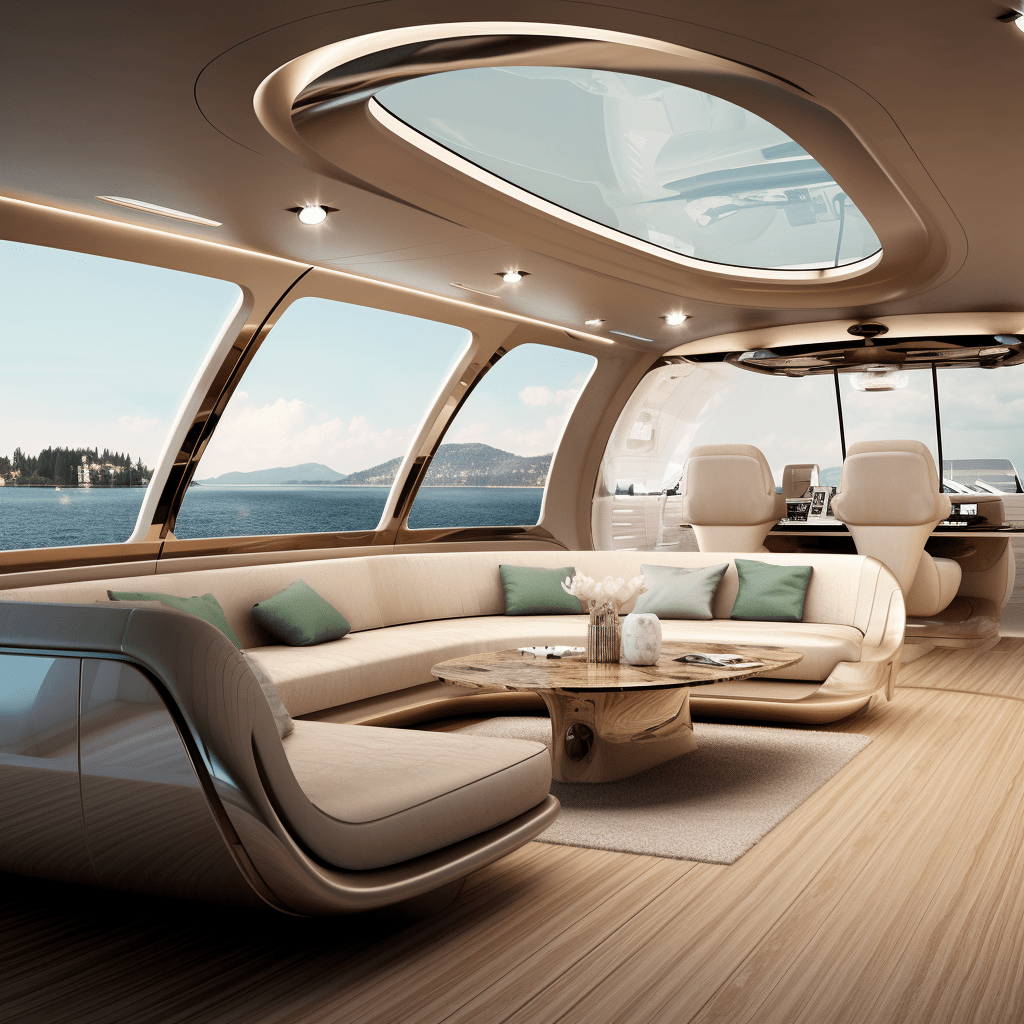
This image is property of burtonwaters.co.uk.
3. Incorporating Advanced Materials
3.1 Lightweight Materials
Lightweight materials have played a pivotal role in modern yacht design, enabling designers to create vessels that are both efficient and environmentally friendly. Materials such as carbon fiber, aluminum alloys, and Kevlar are not only lighter than traditional materials like wood or steel but also offer superior strength and durability. These lightweight materials reduce the overall weight of the yacht, leading to improved fuel efficiency, increased speed, and enhanced maneuverability.
3.2 Composite Materials
Composite materials, such as fiberglass and carbon fiber composites, have revolutionized yacht construction. These materials offer a multitude of benefits, including high strength-to-weight ratios, resistance to corrosion, and flexibility in design. By utilizing composite materials, designers can create sleeker hull shapes that reduce drag and improve hydrodynamics, resulting in higher speeds and improved fuel efficiency.
3.3 Nanotechnology in Yacht Design
Nanotechnology is another area of innovation in yacht design. By incorporating nanomaterials, such as carbon nanotubes and graphene, into the construction process, designers can further enhance the strength and performance of yachts. Nanomaterials offer exceptional mechanical properties, such as high tensile strength and exceptional heat resistance, making them ideal for various applications in yacht design. Additionally, the self-cleaning properties of certain nanomaterials help to reduce maintenance, ensuring that yachts stay in pristine condition.
4. Enhancing Performance through Technology
4.1 Hydrodynamics and Computational Fluid Dynamics (CFD)
Hydrodynamics plays a crucial role in yacht design, determining how the vessel interacts with water and affects its performance on the water. With the advent of computational fluid dynamics (CFD), designers can accurately simulate and analyze the flow of water around the hull, identifying areas of high drag and optimizing the hull shape for improved performance. By fine-tuning the hull design using CFD, yacht designers can maximize speed, stability, and fuel efficiency, resulting in an exceptional on-water experience.
4.2 Advanced Hull Designs
Advancements in hull design have greatly contributed to the performance of modern yachts. One notable development is the use of hull shapes that minimize resistance, such as the deep-V and wave-piercing designs. These hull designs allow yachts to cut through waves more efficiently, reducing fuel consumption and providing a smoother and more comfortable ride. Additionally, innovations like retractable keels and foils enhance stability and maneuverability, further improving the performance and handling of yachts.
4.3 Stability and Maneuverability Systems
Technology has also led to significant advancements in stability and maneuverability systems on yachts. Dynamic stabilization systems, such as gyroscopes and fin stabilizers, help to reduce rolling motion, enhancing comfort on board. In addition, joystick control systems make maneuvering yachts in tight spaces effortless, providing greater control and confidence to captains and crew.
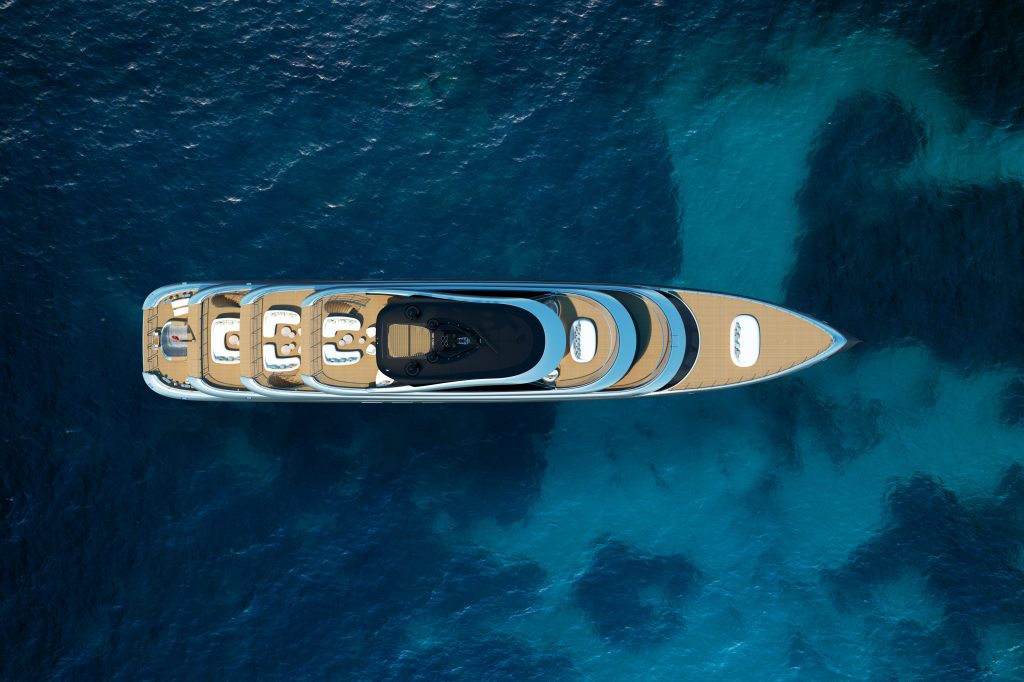
This image is property of cdn.boatinternational.com.
5. Improving Energy Efficiency
5.1 Hybrid Propulsion Systems
The push for greener yachting has led to the development of hybrid propulsion systems. These systems combine traditional diesel engines with electric motors and batteries, allowing for more efficient and eco-friendly operation. By utilizing electric propulsion during low-speed maneuvers or when cruising in environmentally sensitive areas, yacht owners can reduce emissions and noise pollution, while also enjoying the benefits of decreased fuel consumption and increased range.
5.2 Solar and Wind Energy Integration
Renewable energy sources, such as solar and wind power, are being integrated into yacht design to reduce reliance on traditional fuel sources. Solar panels and wind turbines can be installed on the yacht’s deck or rigging, harnessing the power of nature to generate electricity. This clean energy can be used to power onboard systems, reducing the need for generators and further decreasing the yacht’s carbon footprint.
5.3 Smart Energy Management Systems
Smart energy management systems are another innovation that ensures optimal energy usage on board yachts. These systems monitor and control the energy consumption of various systems, such as lighting, heating, and air conditioning, optimizing their operation for maximum efficiency. By intelligently managing energy usage, yacht owners can minimize waste, prolong the lifespan of onboard systems, and ultimately reduce their environmental impact.
6. Integration of Smart Systems
6.1 Internet of Things (IoT) Applications
The Internet of Things (IoT) has made its way into yacht design, creating a truly connected and intelligent onboard experience. IoT applications enable various devices and systems on the yacht to communicate with each other, enhancing automation, convenience, and safety. Yacht owners can control and monitor various aspects of the vessel, such as lighting, temperature, security, and entertainment systems, using smartphones or tablets. This level of connectivity not only improves the overall yachting experience but also ensures efficient operation and maintenance.
6.2 Automated Onboard Systems
Automation has become an integral part of modern yacht design, simplifying tasks and reducing the workload for crew members. Automated systems, such as anchoring, docking, and navigation, enable captains and crew to operate yachts with greater precision and safety. These systems utilize sensors, cameras, and advanced algorithms to accurately assess the surrounding environment and make necessary adjustments, ensuring smooth and effortless operation.
6.3 Advanced Navigation and Communication Systems
Advancements in navigation and communication systems have greatly improved safety and efficiency on board yachts. GPS navigation systems provide accurate positioning and route planning, while radar and sonar systems help detect potential hazards. Communication systems, such as satellite phones and internet connectivity, enable constant communication with the shore and emergency services. These advanced systems ensure that captains and crew are well-equipped to navigate safely and efficiently, even in challenging conditions.

This image is property of burtonwaters.co.uk.
7. Innovations in Interior Design
7.1 Virtual Reality (VR) and Augmented Reality (AR)
Virtual Reality (VR) and Augmented Reality (AR) are transforming the interior design of yachts, allowing owners to visualize and customize their yacht’s layout before construction begins. VR technology immerses owners in a virtual replica of their yacht, enabling them to explore different interior design options and make informed decisions. AR technology, on the other hand, overlays virtual elements onto the physical yacht, enhancing the understanding and visualization of various design concepts.
7.2 Smart Home Technology
Smart home technology has found its way onto yachts, providing owners with the comforts and conveniences of a connected home. Lighting, temperature, entertainment, and security systems can all be controlled and automated using smart home devices. With just a few taps on a smartphone or tablet, owners can create personalized settings, set moods, and ensure a luxurious and comfortable onboard experience.
7.3 Customizable Interiors
Yacht owners have increasingly demanded customizable interiors that reflect their personal style and preferences. From luxurious materials and finishes to bespoke furniture and decor, interior designers collaborate closely with owners to create unique and personalized spaces. Advanced computer-aided design tools and 3D modeling allow owners to visualize their ideas and make adjustments before the construction process begins, ensuring that their vision is brought to life.
8. Impact on Safety and Security
8.1 Advanced Surveillance and Monitoring Systems
Safety and security have always been paramount in yacht design, and technology has further enhanced these aspects. Advanced surveillance systems, including CCTV cameras and thermal imaging cameras, provide real-time monitoring of the yacht’s surroundings, ensuring early detection of potential threats. Additionally, alarm and sensor systems alert the crew to unauthorized access, fire, or other emergencies, allowing for prompt response and mitigation of risks.
8.2 Emergency Response Technologies
Yachts are equipped with state-of-the-art emergency response technologies, ensuring the safety of passengers and crew in emergency situations. Advanced fire detection and suppression systems quickly detect and suppress fires, limiting damage and providing valuable time for evacuation. Emergency beacons and satellite communication systems enable instant distress signal transmission, facilitating swift response from nearby vessels or rescue services.
8.3 Fire Safety Systems
Fire safety systems play a crucial role in yacht design, protecting both the vessel and its occupants from the devastating effects of fire. Automatic fire suppression systems, such as water mist or gas systems, can quickly extinguish fires and prevent their spread. Fire-resistant materials are used in critical areas, and fireproof doors and compartments enhance compartmentalization, reducing the risk of fire spreading throughout the yacht.
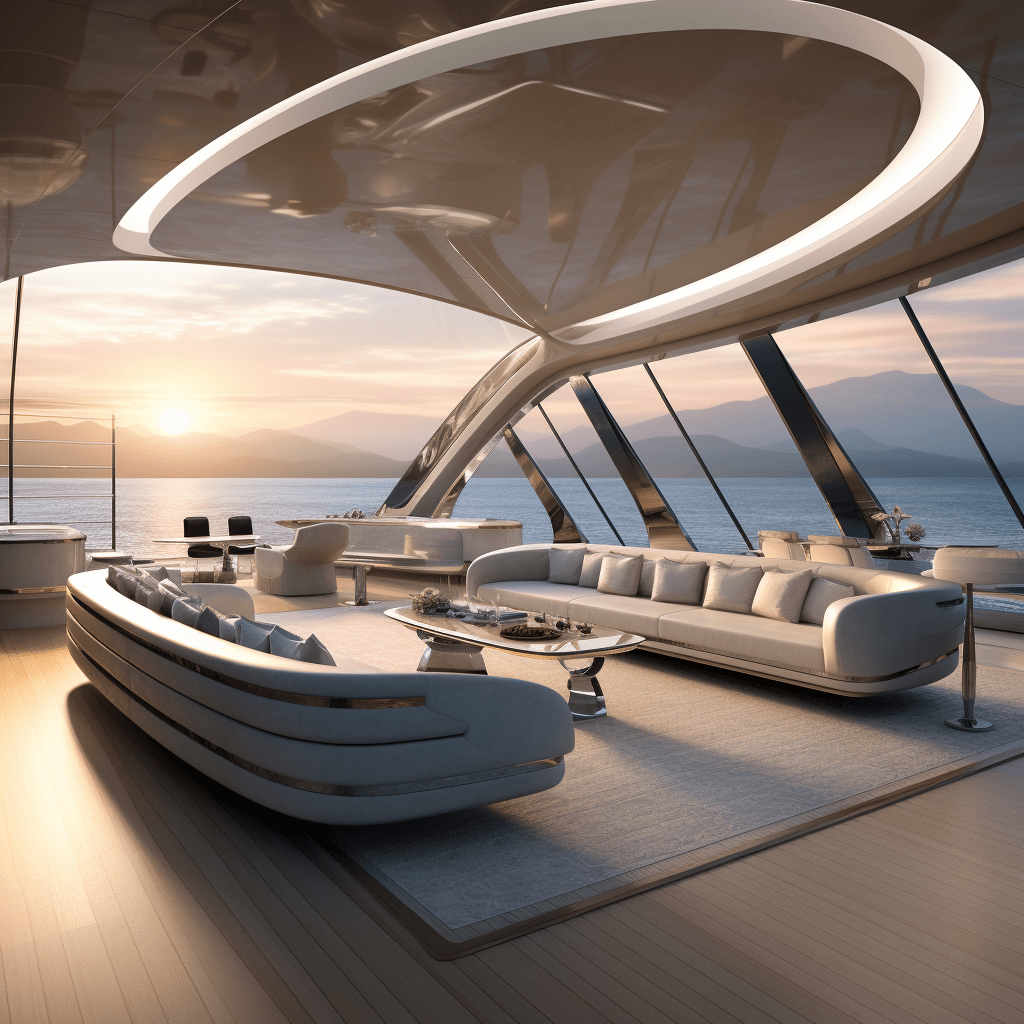
This image is property of burtonwaters.co.uk.
9. Environmental Considerations
9.1 Sustainable Materials and Construction
Yacht designers and builders are increasingly mindful of the environmental impact of their creations. Sustainable materials, such as eco-friendly composites and recycled materials, are being used in construction, reducing waste and reliance on non-renewable resources. Furthermore, eco-conscious construction practices, such as advanced waste management systems and efficient manufacturing processes, help minimize the yacht’s carbon footprint throughout its lifecycle.
9.2 Waste Management Systems
Proper waste management is a critical aspect of yacht design, ensuring minimal impact on fragile marine ecosystems. Yachts are fitted with advanced waste management systems, including sewage treatment plants and onboard recycling facilities. These systems treat and process waste onboard, ensuring compliance with stringent environmental regulations and reducing the discharge of pollutants into the sea.
9.3 Reduced Carbon Footprint
Technological advancements in yacht design have led to significant reductions in carbon emissions. From the use of lightweight materials and hybrid propulsion systems to energy-efficient onboard systems, yachts are becoming increasingly eco-friendly. By minimizing fuel consumption and embracing renewable energy sources, yacht owners and operators can reduce their carbon footprint, demonstrating their commitment to environmental stewardship.
10. Conclusion
Technology has undoubtedly played a pivotal role in shaping the trends of yacht design. From the early days of sailing to the modern era of advanced materials, smart systems, and eco-friendly solutions, technology has revolutionized every aspect of yacht ownership and chartering. With each innovation and breakthrough, yacht designers and builders are pushing the boundaries of what is possible on the water, creating vessels that are faster, more efficient, safer, and more luxurious than ever before. As technology continues to evolve, we can expect even more exciting developments in yacht design, ensuring an unparalleled yachting experience for years to come.
